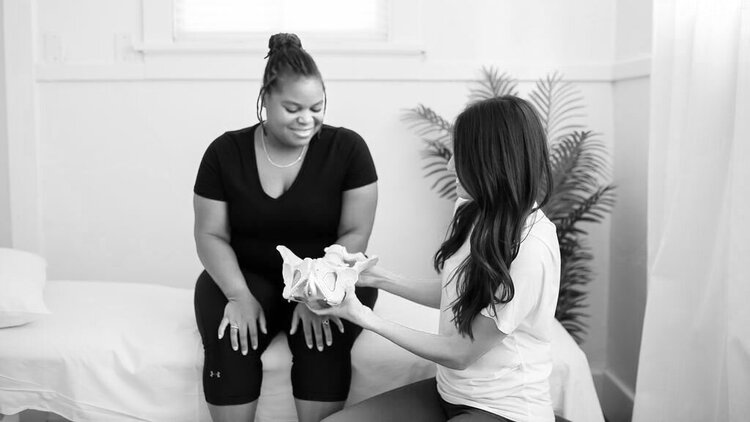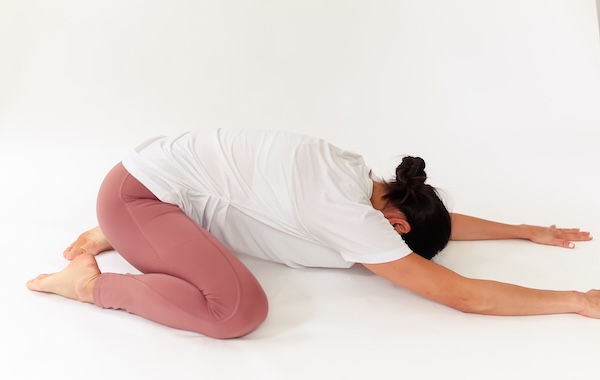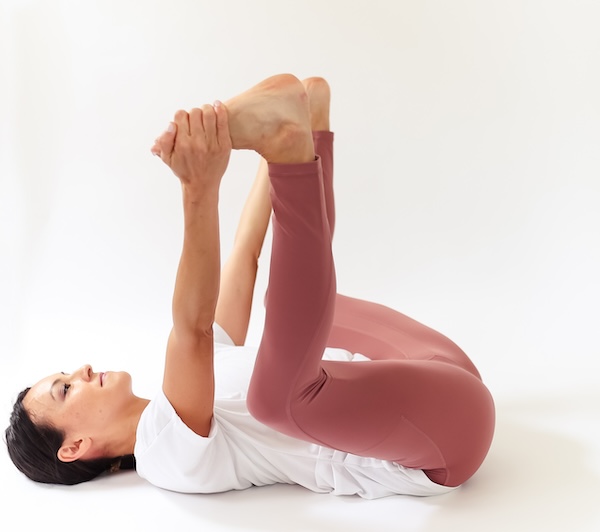Any medical provider of physical therapist that tells you “just do your kegels!” may not be providing the best advice for you. MANY women and men have overactive or tense pelvic floor muscles and kegels/ tightening exercises can make matters worse, especially during pregnancy and postpartum. So how do you know if your pelvic floor is too tight or tense? A personalized PT session is ideal, but there are some signs and symptoms that may indicate your pelvic floor muscles are TOO TIGHT and you need to work on relaxation before strengthening first.
How To Know If Your Pelvic Floor Is Too Tight
Pooping Problems
Constipation, straining during bowel movements, a sensation of incomplete emptying, pencil thin poops, hard poops that are difficult to empty, hemorrhoids, painful bowel movements and rectal pain could all be symptoms that your pelvic floor is too tight.
Peeing Problems
Straining or difficulty starting your stream, a splayed or weak stream, burning during urination, sensation of incomplete emptying, having the urge to pee minutes after you just went, and bladder pain or burning may also point to a too tight pelvic floor.
Sexual Health Issues
Pain with intercourse, pain with initial and/or deeper insertion, if sex feels too tight or like you’re tearing, pain or throbbing after intercourse, if it feels like your partner is hitting a wall, if you feel burning or rawness at the opening, or if you have difficulty with orgasms could all point to a potential tight pelvic floor. Painful pelvic examinations or difficulty inserting tampons are also early indicators of pelvic floor muscle tension.
Pelvic Pain
If you have any of the following it could point to a too tense pelvic floor: vaginal pain, tailbone pain, pain with sitting, pain with tampon insertion, painful pelvic exams, vulvar pain or burning, chronic “infections” when tests are negative or antibiotics don’t work, throbbing or heaviness in the pelvis, or deep hip or high hamstring pain that doesn’t resolve with stretching. If your symptoms get worse after kegels or if you can’t relax after a kegel contraction, those are signs that kegels may not be the appropriate exercise. Focus must be on downtraining or relaxing the pelvic floor muscles first.
Stretches to Relax Pelvic Floor Tension
#1 Child’s Pose
Kneel on the floor.
Touch your big toes and spread your knees wider than your hips. Rock your hips backward onto your heels and stretch your arms forward.
Exhale and move your torso closer to the ground. Hold the pose for 5-10 breaths.
#3 Happy Baby Pose
Lie on your back.
Exhale and bring your knees to your belly. Inhale and grip the outside of your feet with your hands, opening your knees slightly wider than your torso. Bring your knees toward your armpits.
To create resistance, push your feet up into your hands as you gently pull downward. Hold the pose for 5-10 breaths.
#4 Deep Squat Stretch
To perform, begin by standing with feet slightly wider than shoulder-width apart.
Point your toes slightly outward, and slowly bend your knees and push your bottom back, as if you’re about to sit down. Keep your chest lifted and your back straight. Make sure to keep the knees in line with your toes, and avoid letting them roll inward or out.
As you squat, put your elbows on the inside of your thigh, press your palms together, and imagine pulling your belly button toward your spine. Hold the pose for five slow breaths, then slowly rise.
Relaaaaaaax.
The Relaxation Series is only available inside the V-Hive, an online membership platform with on-demand workouts to strengthen or relax your pelvic floor and core. You deserve to be free of chronic pelvic pain and tension. Join today!







